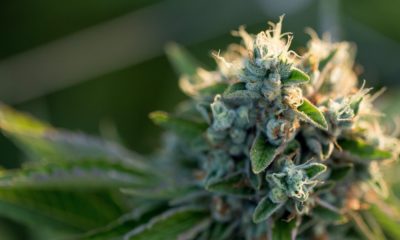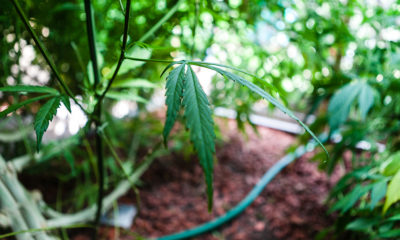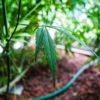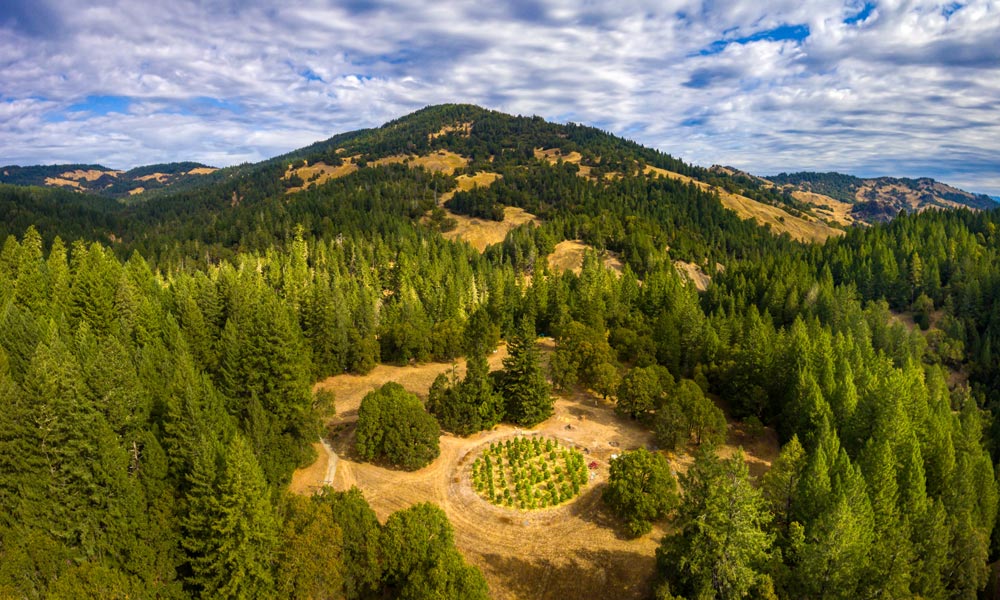
Cultivation
Spring Planting for Sungrown Cannabis at Swami Select
Swami Select co-founder gives a detailed account of planting seeds and tending the soil in their cannabis estate’s various gardens this spring.
The days are longer, and the sun has warmed the soil—planting season is upon us. Even before the seeds are cracked, and long before the magic herb goes in the ground, there is a fair amount of preparation work to be done.
Ganja Ma Gardens, home of Swami Select cannabis, is nestled in the mountainous woodlands of Northern California’s Emerald Triangle. Last fall, we decided to move the 30 cannabis plants that grew in the Rose Garden to the primary cultivation area known as the Sri Yantra Garden. The Rose Garden was the first place we grew cannabis when we started the farm many years ago. But over the past few years, the plants got smaller and smaller, even though they received all the same amendments, compost teas and manure as the plants in the other gardens. We finally figured out that the roots of several enormous Oak and Doug Fir trees growing outside the garden fence had invaded the garden. The roots were stealing most of the water and nutrients that we thought were going to the plants.
In April, we moved the Rose Garden soil to our mixing area next to the Sri Yantra Garden. We used an excavator to dig 30 new holes in that garden. The crew gathered old fallen logs from around the ranch which were placed in the holes, along with hardware cloth for gopher protection and gypsum to help loosen up the clay in the native soil. This became the base of the mounds, or “hugellettes,” as I call them. To meet canopy requirements set by the state, each cannabis plant has its own little mound, measuring approximately seven feet in diameter. As the buried wood decomposes, it holds water and fosters microbial life. In the beginning of the process, however, it consumes a fair amount of nitrogen requiring the addition of chicken manure to compensate.
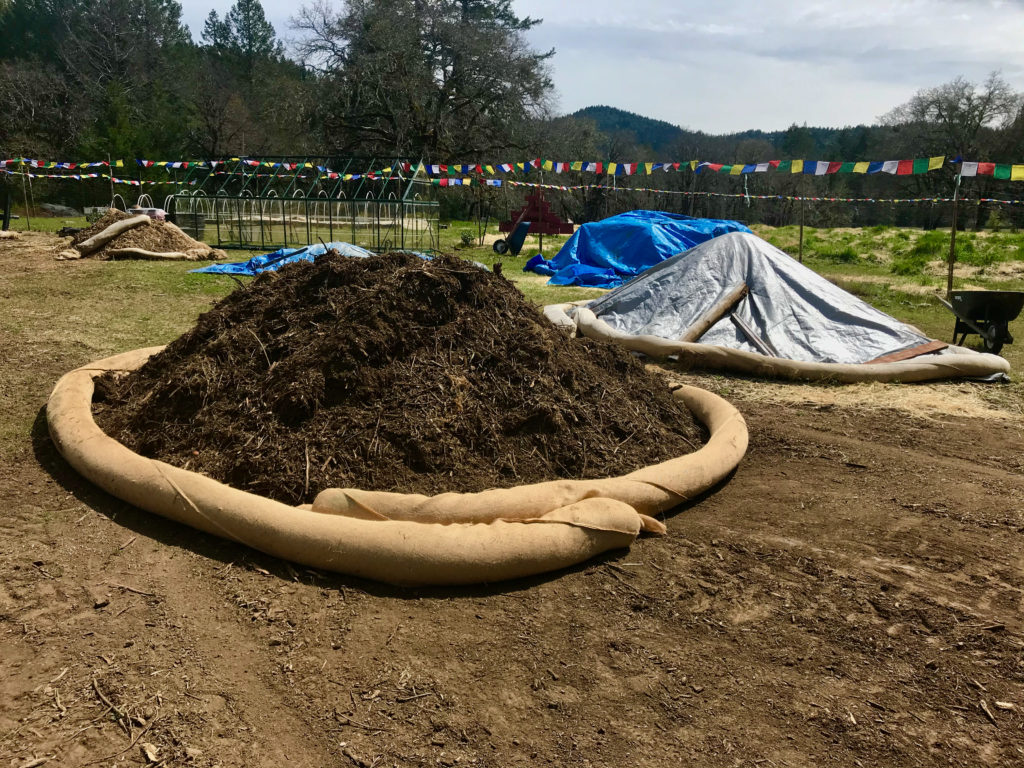
Following the spring’s heavy windstorms, numerous fallen branches were gathered up and wood chipped. Added to the chips were dried oak leaves and last year’s compost pile consisting of cannabis waste and kitchen scraps, all of which was watered and turned. We also acquired about two yards of alpaca “beans” (aka manure) from our neighbor up the hill and added that to the mix.
During the winter, the worms in the worm bin perished in the cold, and the whole batch was harvested and added to the compilation, as well. A fresh worm bin has been started for their castings. All these piles of natural ingredients will be mixed with chicken manure and mined minerals, such as Azomite containing trace minerals and Supplemate containing potassium and manganese sulfate, plus the soil from the Rose Garden to make the new hugellettes.
In April, because it’s still so cold, compost tea brews must bubble for 48 hours before microbial life multiplies. Next, the brews were poured on the garden mounds and the piles of Rose Garden soil.
After testing the existing mounds in the Sri Yantra Garden, we found they needed little in the way of amendments. After they have been loosened with a broad fork, the same mix of natural ingredients and amendments listed above will be added on top of all the mounds and then mulched over with organic wheat straw and drenched with compost tea.
Suddenly, at the end of April, the cover crop started coming in. The seeds were broadcast in late November, but the wild turkeys ate them all—the bonus being that they left behind their poop!
Another cover crop seeding in February (this time covered with hardware cloth) fared a bit better, but the lack of rain and the cold spring inhibited much growth. Then came a late rain, sunshine, warm days, and it sprang to life. Now, green and flourishing, it is being weed-whacked and turned into mulch on the beds.
Choosing Cultivars
After much discussion about which cultivars to grow this season, we selected eight strains from Humboldt Seed Company, Heartrock Mountain Farm and our own collections, which contained seeds developed especially for us years ago by Flowerdaze Farm and our own gardeners.
We placed all the seeds at the feet of Ganja Ma, the Goddess of Cannabis, for a moon cycle. Following an ancient tradition of calling on higher powers to bless the crop, we chanted mantras to set the intention for the flowers to bring healing and inspiration to the end-user. On April 13, with the new moon in Taurus, we repeated more mantras and put the seeds in little jars of water covered with cloth, adding a few drops of water from the sacred Ganges River in India.

Once the seeds cracked and the tiny white taproots peeked out, we planted them in one-gallon pots with the soil from last year’s male starts, which had been composting all winter and were also inoculated with a compost tea brew. Once the first little rounded cotyledon leaves sprouted, the statue of Ganja Ma was brought out from her place indoors to the Sri Yantra Garden and set atop the stacked triangles which form the Sri Yantra—the sacred geometric symbol signifying the complementarity of male and female energies.
Greater Efficiency with Gender Testing
A big change this year was the decision to do gender testing with Leafworks. This will enable us to put the plants in the ground much earlier, as we won’t have to wait for each plant to show physical signs of gender. In the past, it was a tedious process: every day throughout June, we would carefully inspect each plant for the two little antennae-like yellowish hairs in the branch node, signaling it’s a female.
Gender ID Testing also means less water, less fertilizer and less labor caring for hundreds of plants that will eventually become male and need to be put down. This year all the tiny leaf cuttings for the testing were done in one day in mid-May. Results should be back in a week. With the girls in their beds a month earlier than before, the yield should be greater, as well.
In the category of “it’s always something,” we were perplexed as to why 30-40 of the cracked seeds never sprouted. After days spent wondering what we did wrong, we moved some planters and discovered a family of mice living underneath some ground covering. They had been feasting on the tender sprouts—a delicious salad bar for them. To make up for the loss, we started a batch of new seeds and are still waiting for them to sprout.
The bright-green seedling starts are about six inches tall now, and they each received a scoop of chicken manure to spur the next stage of growth. Soon they will be tucked into their little beds in the Sri Yantra Garden and the Moon Garden. Before the coming harvest in October, they will be watered and fed with compost teas until they reach for the sky, growing to ten feet or more and raising all our spirits.



